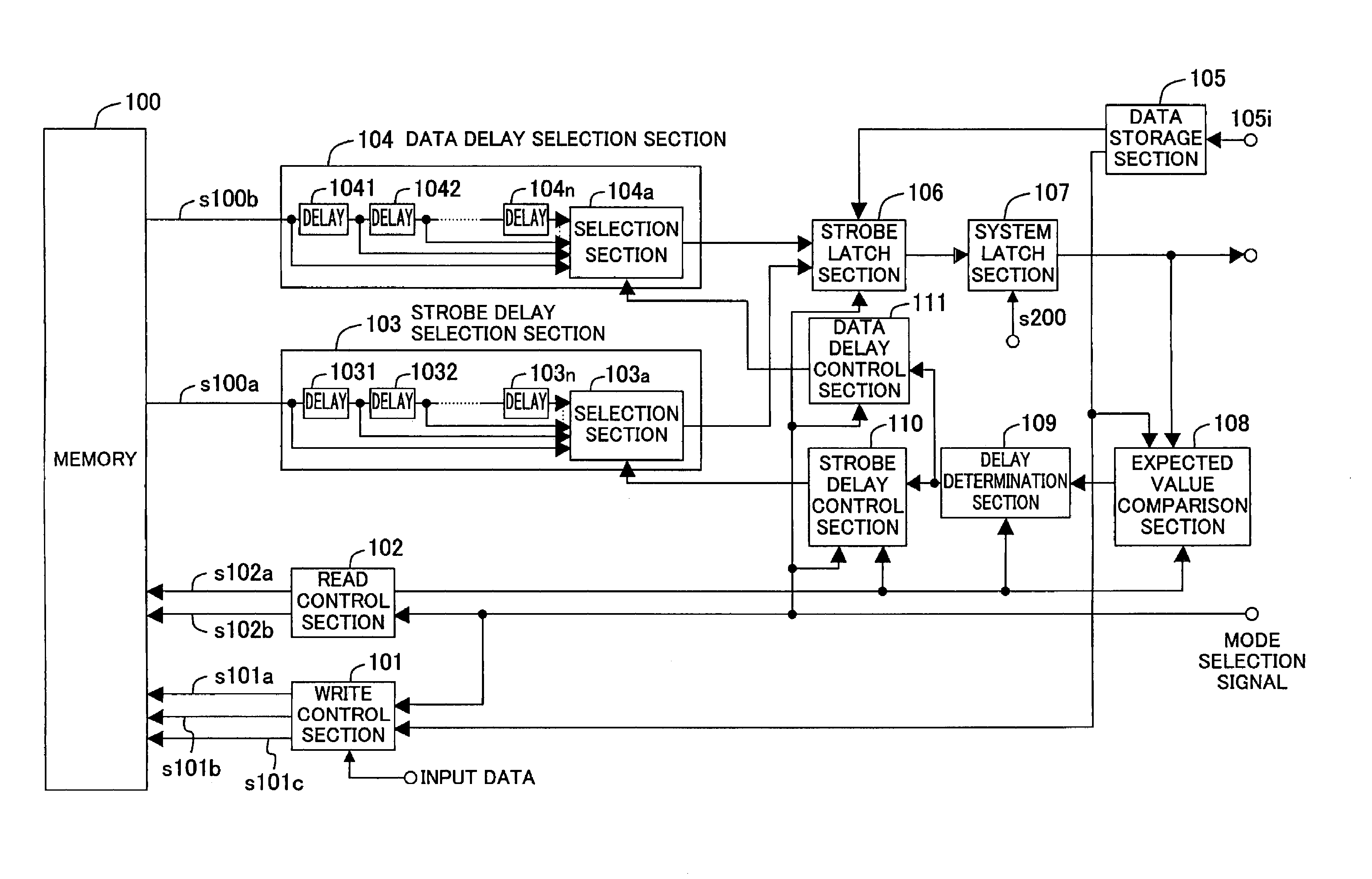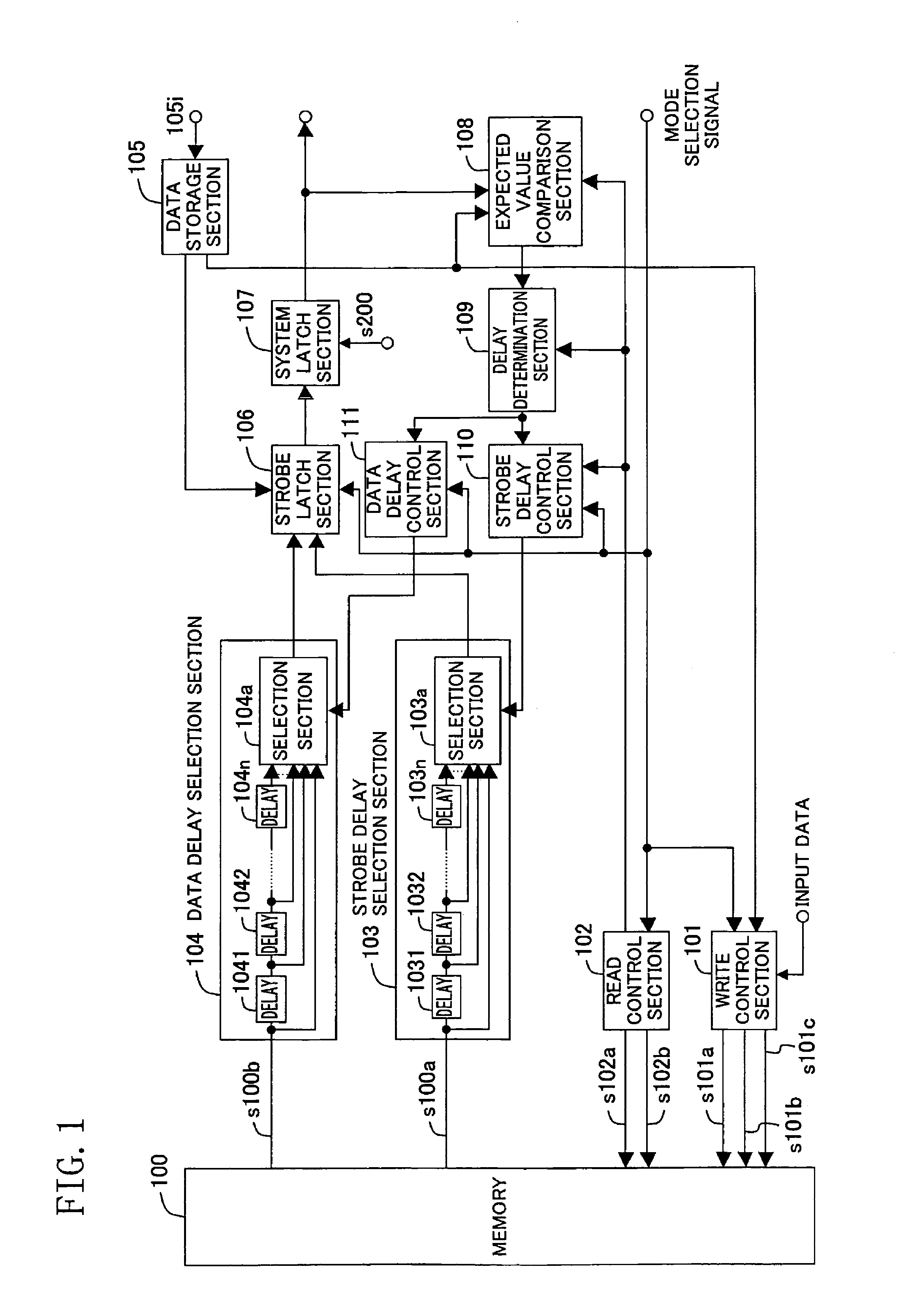Method and apparatus for timing adjustment
a timing adjustment and data technology, applied in the direction of information storage, static storage, digital storage, etc., can solve the problems of data mislatch, conventional apparatus may fail to perform a latch timing adjustment with a high precision, and data mislatch may occur
- Summary
- Abstract
- Description
- Claims
- Application Information
AI Technical Summary
Benefits of technology
Problems solved by technology
Method used
Image
Examples
first embodiment
Second Variation of First Embodiment
[0093]A second variation of the first embodiment will now be described with reference to FIG. 8.
[0094]This variation is directed to a case where a strobe signal s100a″ from the memory 100 has m bits (m is an integer greater than or equal to 2), and readout data s100b″ from the memory 100 has n bits (n is an integer greater than or equal to 2).
[0095]In FIG. 8, the memory 100 outputs the m-bit strobe signal s100a″ and the n-bit readout data s100b″. For example, the strobe signal s100a″ may have 4 bits, and the readout data s100b″ may have 32 bits, wherein 1 bit of the strobe signal corresponds to 8 bits of the readout data. Accordingly, the apparatus includes a number m of strobe delay selection sections 303 for producing a delayed strobe signal for each of the m bits. Similarly, the apparatus includes a number n of data delay selection sections 304 for producing delayed data for each of the n bits.
[0096]The apparatus includes a number n of strobe l...
second embodiment
First Variation of Second Embodiment
[0119]A first variation of the second embodiment will now be described with reference to FIG. 12.
[0120]In this variation, a change is made to the configuration of the clock delay selection section 403 shown in FIG. 10.
[0121]Specifically, referring to FIG. 12, the clock delay selection section 403 of this variation includes a fixed delay section 4030 and a variable delay section 4031.
[0122]The fixed delay section 4030 receives the system clock s200, and simultaneously produces a plurality of system clocks of different phases from the system clock s200 to selectively output one of the system clocks. Different phases of the system clock s200 can be easily produced by using a PLL circuit or a DLL circuit, for example.
[0123]The variable delay section 4031 includes a series of delay circuits 40311, 40312 to 4031n and a selection section 4031a. The variable delay section 4031 delays a system clock of a phase selected by the fixed delay section 4030 succe...
PUM
 Login to View More
Login to View More Abstract
Description
Claims
Application Information
 Login to View More
Login to View More - R&D
- Intellectual Property
- Life Sciences
- Materials
- Tech Scout
- Unparalleled Data Quality
- Higher Quality Content
- 60% Fewer Hallucinations
Browse by: Latest US Patents, China's latest patents, Technical Efficacy Thesaurus, Application Domain, Technology Topic, Popular Technical Reports.
© 2025 PatSnap. All rights reserved.Legal|Privacy policy|Modern Slavery Act Transparency Statement|Sitemap|About US| Contact US: help@patsnap.com



